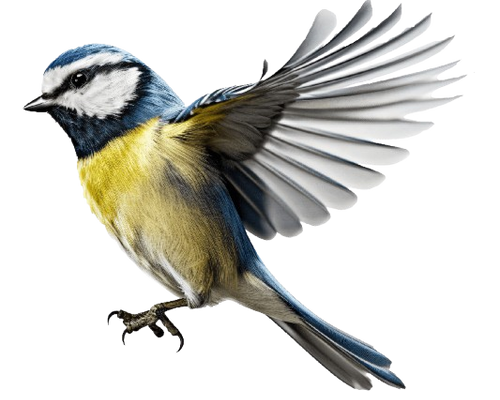Updated March 19, 2025
Avian influenza, commonly known as bird flu, continues to impact domestic poultry, waterfowl, raptors, and some shorebirds across North America. The current strain, H5N1, is classified as highly pathogenic avian influenza (HPAI) due to its devastating effects on poultry populations. However, according to the Centers for Disease Control (CDC), transmission of avian flu to humans remains extremely rare, with most cases linked to prolonged and direct exposure to infected poultry.
Should You Take Down Your Bird Feeders?
There has been ongoing concern about whether bird feeders contribute to the spread of avian flu among wild birds. Based on expert guidance from the USDA APHIS National Wildlife Disease Program, Cornell Lab of Ornithology, the Canadian Food Inspection Agency, and Environment and Climate Change Canada, the consensus remains:
- There is no official recommendation to take down feeders unless you keep domestic poultry on your property.
- Regular cleaning of bird feeders and birdbaths is always advised to prevent the spread of various diseases.
Songbirds Are at Low Risk
Scientific research and ongoing surveillance indicate that songbirds are not significant
carriers of HPAI:
- The USDA APHIS monitors wild bird populations for avian flu, and while detections in waterfowl and raptors are common, songbird infections remain very rare.
- HPAI primarily affects poultry and certain wild birds like waterfowl and raptors, which can carry and transmit the virus without necessarily becoming ill.
- A 2020 study (Shriner & Root, Viruses) and a 2014 study (Journal of Wildlife Diseases) found no evidence that songbirds act as natural reservoirs for avian influenza.
- Therefore, bird feeders are unlikely to contribute to an outbreak among songbirds.
Recommendations from the Government of Canada
To minimize any potential risk of HPAI transmission, the Canadian Food Inspection Agency advises:
- Do not handle or hand-feed wild birds, as this encourages unnatural congregations that can facilitate disease spread.
- Keep feeders away from poultry areas to prevent potential contact between wild birds and domestic flocks.
- Regularly clean feeders and birdbaths using a 10% bleach solution (one part bleach to nine parts water), ensuring thorough rinsing and drying before refilling.
Best Practices for Cleaning Feeders
Proper sanitation is key to keeping your backyard birds healthy. Follow these steps:
1. Empty the feeder and remove any leftover seeds or debris.
2. Scrub the feeder with hot water and a 10% bleach or vinegar solution (one part
bleach/vinegar to nine parts water).
3. Rinse thoroughly with clean water.
4. Allow the feeder to air dry completely before refilling.
5. Clean feeders every two weeks (or weekly during peak migration seasons).
6. Hopper and tray feeders require more frequent cleaning due to higher bird traffic.
Final Thoughts
While HPAI remains a concern for poultry and certain wild bird species, current evidence
suggests that bird feeders pose little risk to songbirds. Continuing to enjoy backyard birding is safe, provided that feeders and baths are kept clean. As always, if you also raise poultry, it is best to eliminate direct contact between wild birds and your flock.
For more updates and birding advice, visit UrbanNatureStore.ca.


